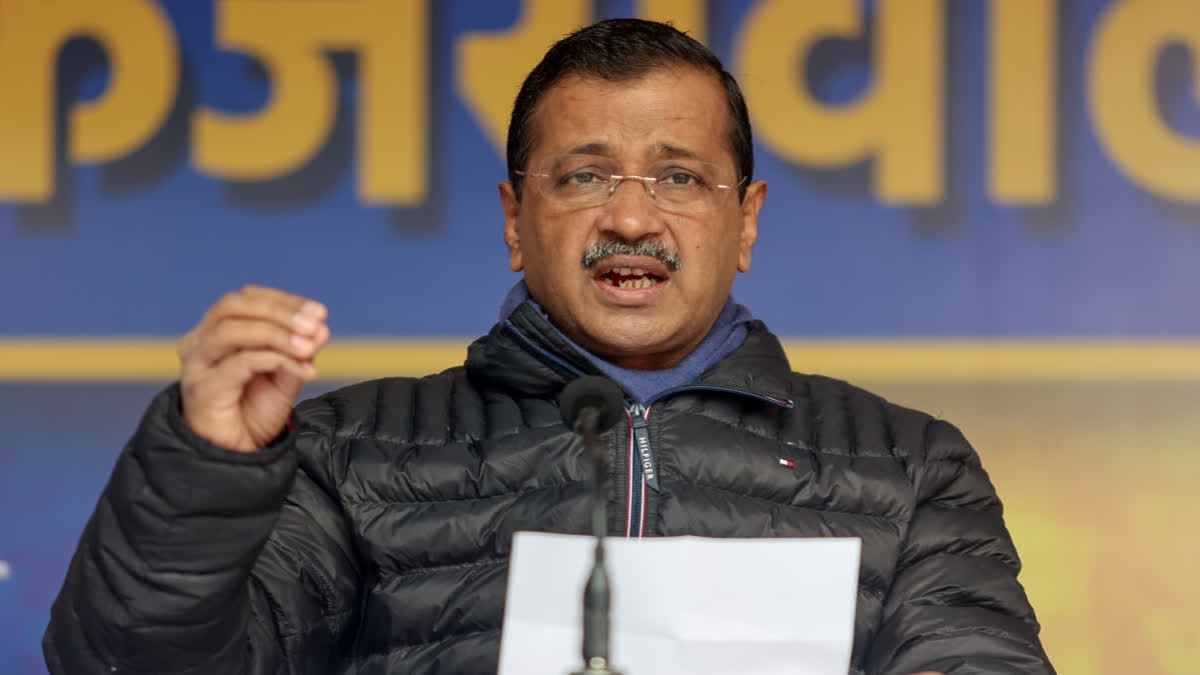New Delhi: From AI-generated spoofs targeting BJP leaders to a flurry of rallies and 'padayatra', the Aam Aadmi Party is strategically utilising every available tool to secure a third consecutive term in power in the national capital.
The party's multifaceted approach for February 5 polls appears designed to resonate with voters across all demographics, blending advanced technology with traditional outreach methods.
A key aspect of the AAP campaign is its use of artificial intelligence (AI) to produce targeted content. This includes videos featuring party leader Arvind Kejriwal alongside Babasaheb Ambedkar and AI-generated spoofs of popular Bollywood characters to attack the opposition, especially the BJP.
These videos, including satirical takes on BJP leaders, are designed to engage a tech-savvy electorate while delivering the AAP's message in a modern, accessible format. The use of the iconic Gabbar character from the movie Sholay to mock the BJP's claims of superior governance serves as a prime example of such digs.
A senior party leader said the campaign strategy includes a mix of door-to-door contact, rallies by top party leaders, and extensive use of social media to highlight the achievements of the AAP government.
Also, the party started its outreach in various constituencies through its padyatra campaign that began mid-2024 and the candidates were announced early as compared to other parties to take a strategic lead, he said.
The AAP, however, must tread carefully as the Election Commission has issued an advisory asking all political parties to promote transparency and accountability in the use of AI-generated content.
The Delhi Police has also designated a nodal officer to monitor social media platforms and SMS for potential misuse, including the circulation of deepfake videos and misleading messages during the assembly polls.
While technology plays a key role in campaigning, the AAP has placed a strong emphasis on traditional outreach methods in a bid to strengthen personal connections with voters.
E-rickshaws fitted with LED screens and loudspeakers blaring campaign songs and speeches are ensuring that Kejriwal's message reaches every corner of the city.
In addition, the AAP, which has been ruling Delhi since 2015, is strategically targeting key voter segments with a mix of tailored welfare promises.
For women voters, the Mukhya Mantri Mahila Samman Yojana offers a monthly allowance of Rs 2,100, along with free bus rides while the promise of free healthcare for senior citizens, accessible at both government and private hospitals, is central to AAP's appeal to elderly voters.
For the city's auto-rickshaw drivers, said to be a core voter base of the AAP, the party is offering Rs 10 lakh in insurance and Rs 1 lakh in financial assistance for their daughters' marriages.
Kejriwal, along with his wife Sunita, recently shared a meal with an auto driver's family and invited drivers to his home for tea to strengthen this connection. The AAP is also focusing on the 'Purvanchali' community, a significant segment of Delhi's electorate.
It organises Chhath Puja celebrations for the community members hailing from eastern Uttar Pradesh and Bihar and has launched a campaign song in the Bhojpuri language to reach out to them.
To engage the underprivileged voters, Kejriwal has introduced initiatives like the 'Jai Bhim Mukhyamantri Pratibha Vikas Yojana,' which offers free coaching for competitive exams to students from marginalised communities. Kejriwal also recently invited sanitation workers to his home for tea.
To appeal to Hindu voters, the AAP has incorporated elements of soft Hindutva into its strategy. Kejriwal is frequently seen chanting the Hanuman Chalisa on camera and visiting temples, positioning himself as a leader who understands and respects Hindu traditions, in contrast to the BJP's more assertive Hindutva stance.
The AAP has also capitalised on the BJP's internal challenges like not naming a chief ministerial candidate. As BJP leader Ramesh Bidhuri came under fire over his controversial remarks against Congress leader Priyanka Gandhi Vadra and Delhi Chief Minister Atishi, Kejriwal claimed that he was the saffron party's top contender for the chief minister's post.
The BJP, which has been out of power since 1998, struggled to put up an effective counter even as Bidhuri, the candidate from the Kalkaji Assembly constituency against Atishi and Congress' Alka Lamba, vehemently denied the claim. At the core of the AAP's campaign is its extensive welfare programme, which continues to be a major draw for voters.
The party's flagship policies, such as free electricity, water, healthcare, and education, remain central to its appeal, especially among lower-middle-class workers, street vendors, and other marginalised groups.
Kejriwal's involvement in launching initiatives such as the Sanjeevani Yojana for senior citizens and the Mukhya Mantri Mahila Samman Yojana helps reinforce his image as a leader focused on delivering tangible benefits to the people and the AAP positioning itself as a party that understands the pulse of Delhi.
The Delhi Assembly election is being seen as a referendum on AAP's governance model and its leader, Arvind Kejriwal. While many experts and political rivals criticise the party's focus on free welfare schemes, AAP maintains that it has offered a viable alternative model of governance for the country.



